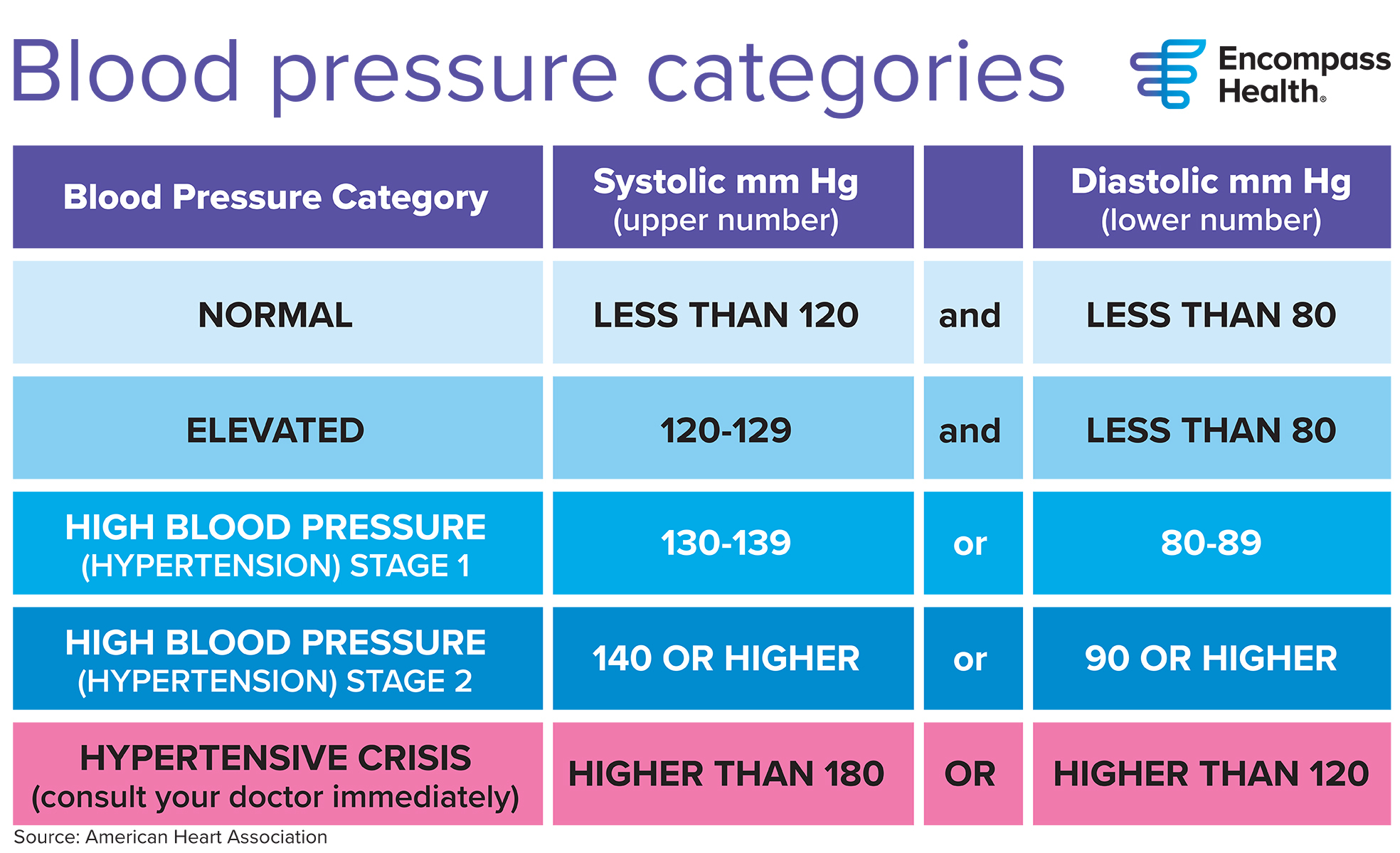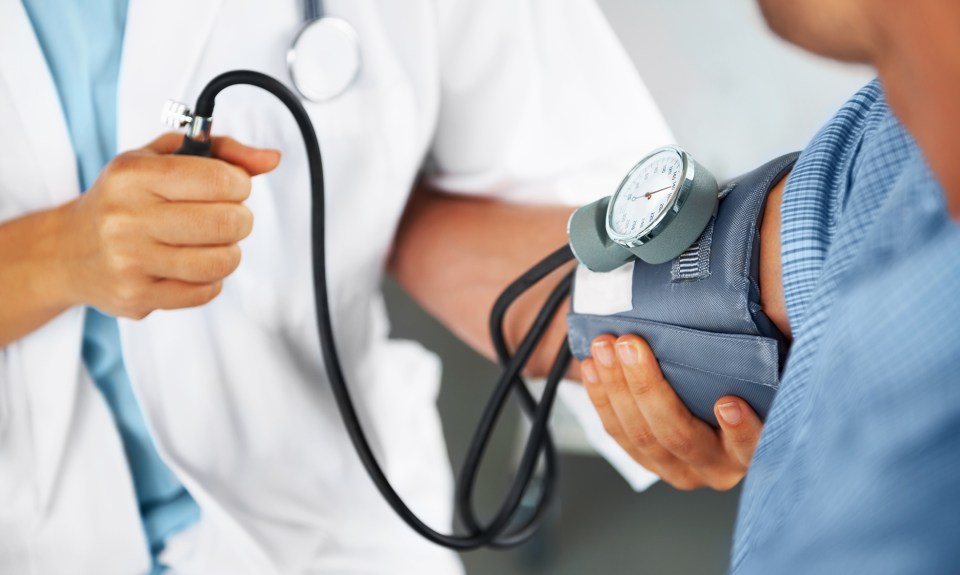Blood pressure numbers offer some important clues about cardiovascular health. Regular blood pressure checks are important, especially as you age. Testing can reveal high or low blood pressure as well as other problems, such as peripheral artery disease. Your primary care provider likely takes your blood pressure at every visit and some pharmacies have blood pressure machines available for customer use. For more frequent checks, you may want to purchase an affordable blood pressure cuff or electronic monitor designed for in-home use.
What is Blood Pressure?
Blood pressure is the force, or pressure, blood puts on the artery walls as it flows through them. With every heartbeat, blood is pumped into the vessels. A blood pressure reading consists of two numbers. The top number is the systolic pressure. This measures the pressure in the arteries when the heart is contracting, or pumping. The bottom number is known as the diastolic pressure. This measurement is taken when the heart muscle is relaxed. The diastolic reading is always lower than the systolic.
Aim for Accurate Blood Pressure Readings
High or low blood pressure cannot be diagnosed with a single reading. An accurate diagnosis requires multiple readings done on different days. Blood pressure should always be taken while at rest. Nervousness, body position, smoking, food, or drink can give a false reading, so it is important to follow the below steps when measuring your own blood pressure:
- Wait 30 minutes after eating or drinking before checking blood pressure
- Place feet flat on the floor and rest your arm on a table or flat surface at chest height
- Choose a comfortable seat and sit 5 minutes before doing the reading
- Empty your bladder ahead of the blood pressure check
- Do not talk while taking your blood pressure
- Take your blood pressure around same time daily
- Keep a log of your readings and be sure to bring it along to medical appointments
Free Blood Pressure Chart

Normal to High Blood Pressure Range
The American Heart Association recognizes five categories of blood pressure based on blood pressure ranges.
Normal blood pressure –readings less than 120/80 mm Hg are classified as normal.
Elevated blood pressure – consistent readings of 120-129 mm Hg systolic and less than 80 mm Hg diastolic indicate high blood pressure (hypertension) is likely to develop if the appropriate steps are not taken.
Stage 1 hypertension – blood pressure consistently ranging from 130-139 mm Hg systolic or 80-89 mm Hg diastolic is considered high. Your primary care provider will likely evaluate your risk of heart attack or stroke and may prescribe blood pressure medications.
Stage 2 hypertension – blood pressure numbers that consistently reach 140/90 mm Hg or higher should be evaluated by your doctor. Medications and lifestyle changes are indicated.
Hypertensive crisis – two readings of 180/120 mm HG obtained 5 minutes apart are extremely concerning. Notify your doctor right away if you experience readings in this range. If the readings are accompanied by symptoms such as chest pain, vision changes, shortness of breath, back pain, weakness or numbness, or difficulty speaking, don’t wait. Call 911 immediately.
Symptoms of High Blood Pressure
It is dangerous to rely on symptoms to determine whether you have hypertension, since most people with high blood pressure do not experience symptoms until readings reach a critical stage. By the time symptoms such as headache or nosebleed do appear, you could be experiencing a hypertensive crisis. Regular blood pressure checks are the best way to determine whether your blood pressure is staying within a normal range.
Prevention and Treatment of High Blood Pressure
Lifestyle plays an important role in preventing and controlling high blood pressure. To keep blood pressure numbers in a healthy range and reduce the risk of heart disease and stroke, the Centers for Disease Control and Prevention (CDC) recommend the following:
- Follow a heart healthy diet by increasing your intake of fresh fruits and vegetables and eating a variety of foods. Focus on foods that contain lots of potassium, fiber, and protein. Reduce your intake of salt and saturated fat. The DASH (Dietary Approaches to Stop Hypertension) is a heart healthy eating plan that has been around for over 20 years. Multiple studies have shown the diet to be effective in lowering blood pressure and cholesterol levels. For more information, visit DASH eating plan.
- Maintain a healthy weight to reduce your risk for high blood pressure and reduce strain on your heart. The good news is that even a small weight loss of 5-10 pounds can lower your blood pressure.
- Get active and work exercise into your day. By adding just 30 minutes of moderate exercise five times a week, you could improve your health. On their website, the American College of Sports Medicine states regular aerobic exercise can lower blood pressure by 5-7 mm Hg and reduce your risk of cardiovascular disease by 20-30%.
- Set limits and avoid unhealthy behaviors. Stop smoking and reduce alcohol intake. Both tobacco and alcohol can raise blood pressure. The CDC recommends limiting alcohol intake to 2 drinks per day for men and 1 drink daily for women.
- Snooze your way to good health by aiming for at least 7 hours of sleep nightly, since lack of sleep has been shown to increase health risks.
Low Blood Pressure: Healthy or Harmful?
You may be diagnosed with low blood pressure, or hypotension, if your blood pressure is consistently below 90 mm Hg systolic and 60 mm Hg diastolic. Chronic low blood pressure is normal for some people and is typically nothing to worry about, but since there is a risk of injury from fainting or falling, you should consult your physician if your low blood pressure is accompanied by symptoms.
Symptoms of hypotension
- Dizziness or lightheadedness
- Fainting
- Blurred vision
- Nausea
- Cold, clammy, pale skin
- Fatigue
When low blood pressure numbers are accompanied by the above symptoms, investigation may be needed to determine if there is a medical cause.
The following conditions may be associated with hypotension:
- Heart disease or heart arrhythmias
- Liver disease
- Certain prescription or over-the-counter medications
- Endocrine disorders including thyroid conditions, hypoglycemia or diabetes
- Dehydration
- Anemia
Types of Low Blood Pressure
Identifying the cause of low blood pressure is important since sudden drops in blood pressure increase your risk of injury from falling, and severe hypotension can even be life-threatening.
- Orthostatic, or postural, hypotension is more commonly seen in pregnant women and the elderly. It is a drop in blood pressure that occurs when you stand from a sitting position or after lying down.
- Postprandial hypotension is a drop in blood pressure seen 1 to 2 hours after eating when blood is routed to the digestive track. If the body is unable to compensate, blood pressure drops causing dizziness or lightheadedness.
- Neurally mediated hypotension is an abrupt drop in blood pressure is caused by miscommunication between the brain and the heart. It can occur after a long period of standing, strenuous exercise, an emotional event, or exposure to extreme heat.
- Severe hypotension due to shock is the most serious form of hypotension and is linked to extreme blood loss, severe dehydration, and other conditions that cause the blood pressure to drop so low that the brain and other organs may not get enough blood.
Low Blood Pressure Treatment
In many cases, low pressure does not require treatment, but if you have symptoms, your doctor may stop or adjust any medications you are taking that could cause low blood pressure. Other steps that could raise blood pressure include:
- Drinking more fluids
- Avoiding or limiting alcoholic drinks
- Eating smaller, more frequent meals
- Reducing carbohydrates
- Move slowly when standing after prolonged sitting or lying
- Elevate the head of your bed
- Avoid sitting with your legs crossed
- Wear compression stockings to reduce blood pooling in your legs
If diet and lifestyle changes are not enough, your health care provider may prescribe medication to help increase your blood pressure.
Play It Safe
Symptoms are rare with both high and low blood pressure so routine checks are the best way to identify changes in your blood pressure. Setting aside a few minutes a day to take your blood pressure provides valuable insight into your health and allows for early treatment.
The content of this site is for informational purposes only and should not be taken as professional medical advice. Always seek the advice of your physician or other qualified healthcare provider with any questions you may have regarding any medical conditions or treatments.



